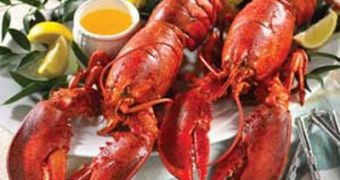Just recently, fishermen who carry on with their business off the coast of Maine reached a rather alarming conclusion: as far as lobsters go, it is best to let go of the idea of setting sail and go in search for them, as this would get them virtually no profit.
More precisely: because of increasing temperatures in the waters of the Atlantic Ocean, the lobster population now faces an unprecedented boom.
As well as this, said marine creatures were forced by the changes in their surrounding environment to come onto the market approximately one month and a half earlier than local fishermen expected.
According to several state officials, this is the first time in recorded history when the month of June brings such a large lobster harvest, and the higher-than-average temperatures during this year's winter and spring are the ones to blame.
It is not difficult to guess that, with so many lobsters to go around, average prices have also dropped to a considerable extent.
This means that, since there is no profit in sight, fishermen are quite reluctant when it comes to going out into the open waters and casting their nets.
Yale Environment 360 informs us that, for the time being at least, fishermen could only get about $3 per pound (about €2,5 per 0,5 kilograms), whereas the break-even point for this oceanic species is $4 (roughly €3 per 0,5 kilograms).
The same source explains how, because of this unfortunate situation, most of Maine's 5,000 fishermen have decided that it is best for them to remain on land until things improve a bit.
It is our opinion that other marine species on which fishermen heavily rely might soon undergo similar population fluctuations unless something is soon done to prevent our oceans from getting warmer and warmer as the days go by.
This means that our global fishing industry is also bound to find itself negatively affected, not to mention that human society may just be cut off from one of its most important food sources.

 14 DAY TRIAL //
14 DAY TRIAL //